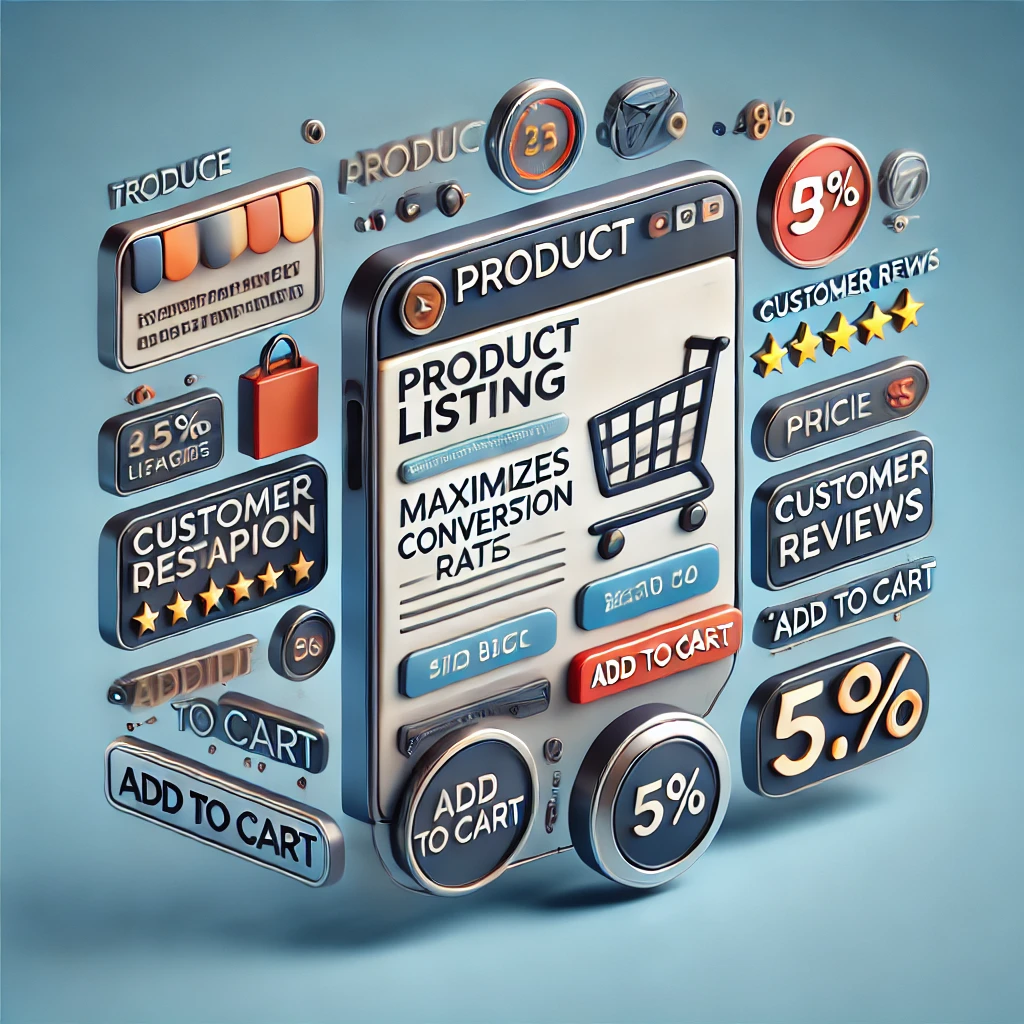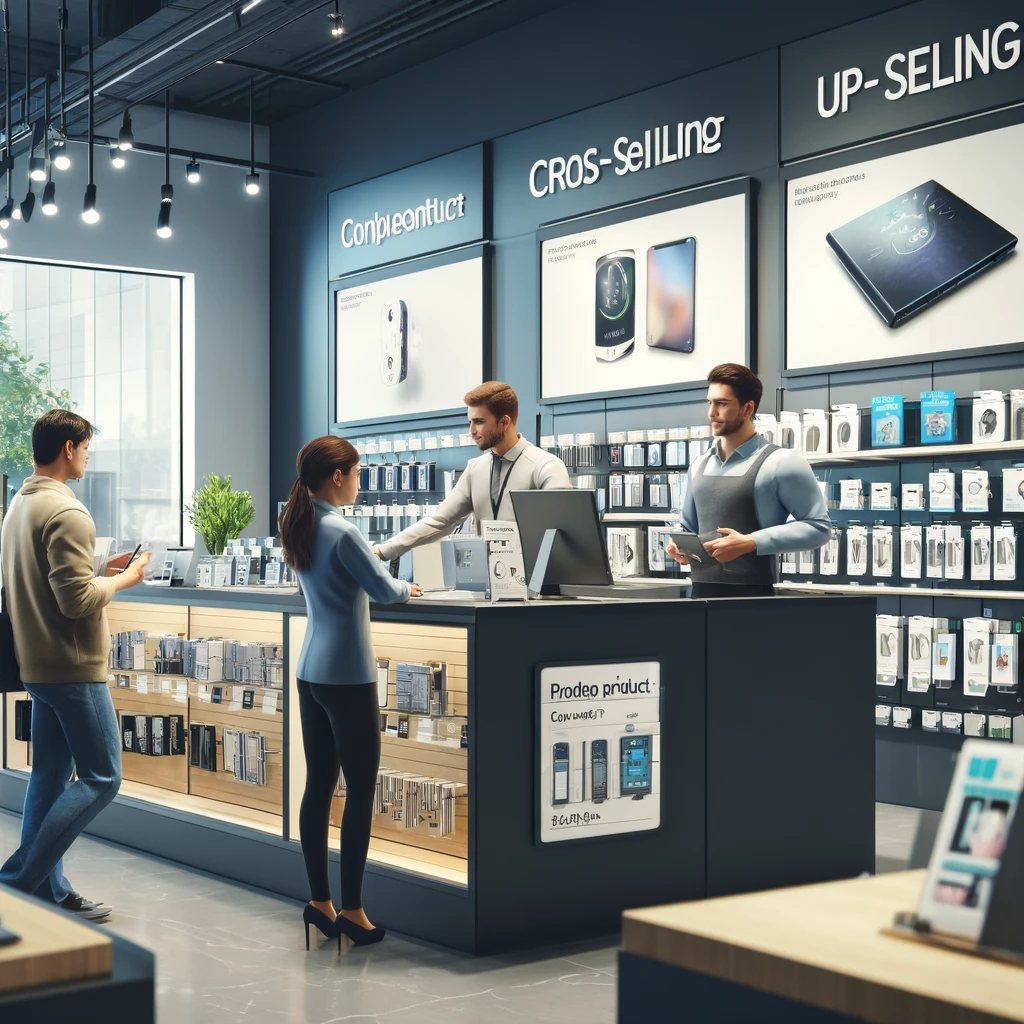
A well-designed product listing page (PLP) can significantly influence a visitor’s decision to make a purchase. With the right mix of product descriptions, images, customer reviews, and pricing, you can create an experience that not only attracts attention but also encourages conversions. This guide outlines key principles and best practices to maximize conversion rates through effective design and content optimization.
1. Compelling Product Descriptions
The product description is one of the most critical elements in driving conversions. It should answer any questions the customer might have while highlighting the product’s benefits in a persuasive and concise manner.
Key Considerations for Product Descriptions:
- Highlight Features and Benefits: While features are important, focusing on the benefits is crucial. Explain how the product solves a problem or improves the customer’s life. What will they gain by using it? Use bullet points for features, followed by a more in-depth explanation of benefits.
- Optimize for Search Engines: Incorporate relevant keywords naturally into the description to improve the page’s SEO performance. However, avoid keyword stuffing, which can harm readability.
- Tone and Language: Adapt the tone to fit your target audience. Use conversational and engaging language for B2C products, while more formal or technical language might suit B2B products.
- Avoid Information Overload: Keep the product description concise, yet informative. Use short paragraphs, and break down information into sections or bullet points to make it scannable.
Structure of a High-Converting Product Description:
- Headline: A clear, attention-grabbing title that states what the product is.
- Short Description: A concise, high-impact summary (1-2 sentences) that highlights the main benefits.
- Detailed Description: An in-depth breakdown of the product’s features, specifications, and use cases.
- Call to Action: End with a compelling call to action that encourages the user to make a purchase.
2. High-Quality Product Images
Visuals are perhaps the most important factor in helping customers evaluate a product, especially in eCommerce where they can’t physically interact with the item. Well-executed product images build trust and significantly impact conversion rates.
Key Considerations for Product Images:
- Use Multiple Angles: Show the product from multiple perspectives to give customers a better understanding of what they’re buying. Include close-ups to highlight specific features and textures.
- Consistency is Key: Ensure that all images have a consistent look, size, and background. This creates a cohesive and professional appearance. White or light-colored backgrounds are often recommended, as they keep the focus on the product itself.
- Include Lifestyle Shots: Show the product being used in real-life situations or environments. This helps customers visualize how the product fits into their life and creates emotional engagement.
- Zoom Functionality: Allow users to zoom in on product images for a closer look at details. This is particularly important for items like clothing, furniture, or tech gadgets, where fine details are critical to decision-making.
- 3D and 360-Degree Views: Consider incorporating 3D models or 360-degree views of the product for an interactive experience. This is especially useful for higher-priced or complex products, like electronics or home appliances.
- Video Content: Videos showcasing the product in use or explaining its key features can be highly persuasive. A short, well-edited product demonstration can engage users and answer their questions effectively.
3. Customer Reviews and Social Proof
Customer reviews are among the most influential factors in converting potential buyers. Authentic feedback from other users builds trust and can reduce the hesitation associated with purchasing online.
Key Considerations for Customer Reviews:
- Display User Ratings Prominently: The average rating (out of 5 stars) should be visible at the top of the page, alongside the product title. A high average rating can positively influence a user’s perception of the product from the outset.
- Feature Verified Reviews: Verified customer reviews carry more weight as they confirm that the reviewer has actually purchased the product. Mark these clearly to enhance credibility.
- Diverse Review Content: Aim for a mix of short, positive reviews, in-depth testimonials, and even constructive feedback. A variety of opinions feels more genuine and instills trust.
- Respond to Negative Reviews: Show that you’re listening to your customers by responding politely to negative reviews. Offer solutions or clarifications to demonstrate your commitment to customer satisfaction. This reassures potential buyers that they’ll be supported after purchase.
- User-Generated Content (UGC): Encourage customers to share images or videos of the product in use. UGC is highly persuasive, as it shows real-world applications of the product. Display these visuals alongside reviews to give prospective buyers additional perspectives.
Optimize Review Display:
- Sorting Options: Allow users to sort reviews by rating (e.g., highest to lowest), recency, or helpfulness. This enables them to quickly find the information most relevant to them.
- Review Summaries: Offer a summary section that breaks down the distribution of ratings (e.g., how many 5-star, 4-star reviews, etc.). Pair this with short summaries of common themes in the reviews, like “Most users found the product durable and easy to use.”
4. Clear and Transparent Pricing
Pricing is a major factor in whether a customer decides to proceed with a purchase, but it’s not just about the price itself—it’s how you present it.
Key Considerations for Pricing:
- Display Pricing Prominently: Ensure that the price is clearly visible on the product page and near the “Add to Cart” button. Avoid making customers search for this critical information.
- Use Psychological Pricing: Employ pricing techniques that have been proven to affect customer perception, such as charm pricing (e.g., $19.99 instead of $20) or tiered pricing to show different price options for different versions or bundles of the product.
- Show Discounts and Offers Clearly: If the product is on sale, make the discount stand out. Display both the original price and the discounted price, as well as the percentage saved. Additionally, create urgency with phrases like “Limited Time Offer” or “Only X Left in Stock.”
- Provide Shipping Information Upfront: Avoid surprising your customers with unexpected shipping fees at checkout. Instead, include estimated shipping costs and delivery times directly on the product page. Offering free shipping can also be a powerful incentive to convert users.
- Payment Flexibility: Offering multiple payment options, including credit/debit cards, PayPal, and financing options (like “Buy Now, Pay Later”), can increase conversions. Flexibility reduces friction for customers who may not want to pay the entire amount upfront.
Price Anchoring and Comparison:
- Price Anchoring: Use higher-priced options to make the mid-tier option appear more affordable. For example, if you offer three tiers, present the most expensive one first, making the middle option seem like a better deal in comparison.
- Bundle Deals: Suggest complementary products as bundles at a slightly discounted rate. This can increase the average order value while providing more perceived value to the customer.
5. Effective Call to Action (CTA)
An often-overlooked component of a product listing page is the call to action. The CTA is your final nudge to guide the customer toward making a purchase.
Best Practices for CTAs:
- Keep It Clear and Action-Oriented: Use concise and direct language such as “Add to Cart,” “Buy Now,” or “Reserve Your Spot.” Avoid vague CTAs like “Submit” or “Next,” which don’t clearly indicate what will happen next.
- Create Urgency: Incorporate urgency in your CTA with phrases like “Limited Stock Available,” “Order Now for Free Shipping,” or “Only X Left at This Price.” Time-sensitive offers or limited stock can push hesitant buyers to take immediate action.
- Positioning Matters: The primary CTA should be placed directly beneath the product title or price, making it easy to spot. Consider placing a secondary CTA at the bottom of the page for users who scroll through all the content before deciding.
- Visual Contrast: Use contrasting colors for the CTA button to make it stand out. Ensure that the CTA button is large enough to attract attention but not so large that it overwhelms the page layout.
6. Additional Design and Usability Considerations
To maximize conversions, the overall design and usability of the product listing page should offer a seamless user experience.
Responsive Design:
With a significant portion of shopping done on mobile devices, your PLP must be fully optimized for mobile users. The layout should adjust for different screen sizes, ensuring that images, text, and CTAs remain readable and functional on both mobile and desktop devices.
Fast Loading Times:
Page speed is crucial for both user experience and SEO. Slow-loading pages can lead to higher bounce rates. Compress images, use optimized code, and leverage CDNs to ensure fast page loading, especially for mobile users.
Product Filtering and Sorting Options:
If your site offers multiple products within the same category, make it easy for users to filter and sort based on preferences like price, rating, popularity, or product features. This helps visitors find what they’re looking for more efficiently, reducing friction in the purchasing journey.
Designing a high-converting product listing page requires a careful balance of compelling product descriptions, stunning visuals, authentic customer reviews, transparent pricing, and effective CTAs. Each element should work in harmony to guide the customer through their decision-making process, removing friction and building trust at every stage.
By focusing on clarity, engagement, and user-centric design, you can create a product listing page that not only attracts visitors but also turns them into loyal customers.

